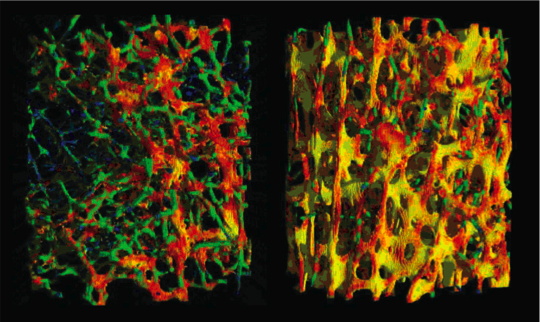Theory Group
Annual Report 2006
Experiments and ProjectsKnow-how Transfer
The working group complex systems is part of the theory department of the MPE and is very much concerned with the development and the application of advanced scientific data analysis methods. The various techniques are in particular derived from concepts of nonlinear data analysis, from ideas of graph theory and from principles of information theory.
Based on these concepts we deal with the appropriate embedding of the data in multidimensional state spaces and with the quantitative description of the resulting point distribution by means of their scaling behaviour or attractor properties. We study in particular similarities and synchronization phenomena between data sets using measures from information theory that are sensitive to linear and nonlinear correlations, as well. Relations between objects are investigated with the help of distance measures derived from several information measures (as for example the mutual information or the Kullback- Leibler distance) and represented with hierarchical trees. Hereby, the data sets under study are of very different modality, comprising time series, images or maps, and spectra in different wavelengths.
For a quantitative description of complex systems the use of statistical methods and newly developed surrogate data techniques is essential. Therefore, a lot of attention is concentrated in the development and study of techniques for generating such surrogate data sets that preserve selected properties of the data and can be used for an appropriate test statistics.
Data analysis problems are considered from a theoretical and generic point of view e.g. by studying (nonlinear) model systems such as the Rössler or Lorenz system. The techniques developed for the various model systems are afterwards applied to natural systems. The applications associated with a variety of interdisciplinary projects range from studying synchronization of brain activity, voice recognition, to text mining problems in extended unstructured text data bases. A few topics will be summarized briefly and presented in the selected articles.

Fig. 1: Visualization of an osteoporotic (a) and a healthy (b) bone structure by means of the scaling index method. Both samples of µ-ct images have a diameter of ~6 mm. The calculated scaling indices of each voxel allow for a differentiation between point-like structures (blue), rod-like structures (green) and sheet-like structures (red and yellow) and help to identify patients with high fracture risk.
In cooperation with the Klinikum Rechts der Isar (Technical University Munich) parameters for the risk assessment of osteoporosis from non-invasive obtained medical images are investigated. The access to high resolution µ-ct images (Fig. 1) allows a further improvement of our methodological approach, which uses a realization for computing the pointwise dimension in state spaces, the scaling index method. Hereby, the quantitative characterization of the bone structure by means of the scaling indices yields a measure for the mechanical strength of the bone and helps to identify patients with high fracture risk.
In a series of experiments, together with LMU Munich, we studied the atomic force microscope (AFM) which can be viewed as an impact oscillator. These systems are a special class of continuous time dynamical systems which undergo intermittent impact collisions and have dynamical trajectories in state space which are piecewise continuous, however, with discontinuities in the velocities resulting from the collisions of the tip with the surface. Even if the system is linear in the absence of impacts, such as a freely oscillating AFM cantilever, the overall dynamics of the AFM exhibits a rich variety of behavior because of the non-linearity introduced by the impacts of the tip. A new chaotic mode of the AFM has been found that has not been observed so far. Understanding the dynamics of the system could help to improve the overall system performance and its imaging quality.
Updated: 2007-10-18
Contact: Michael Kretschmer